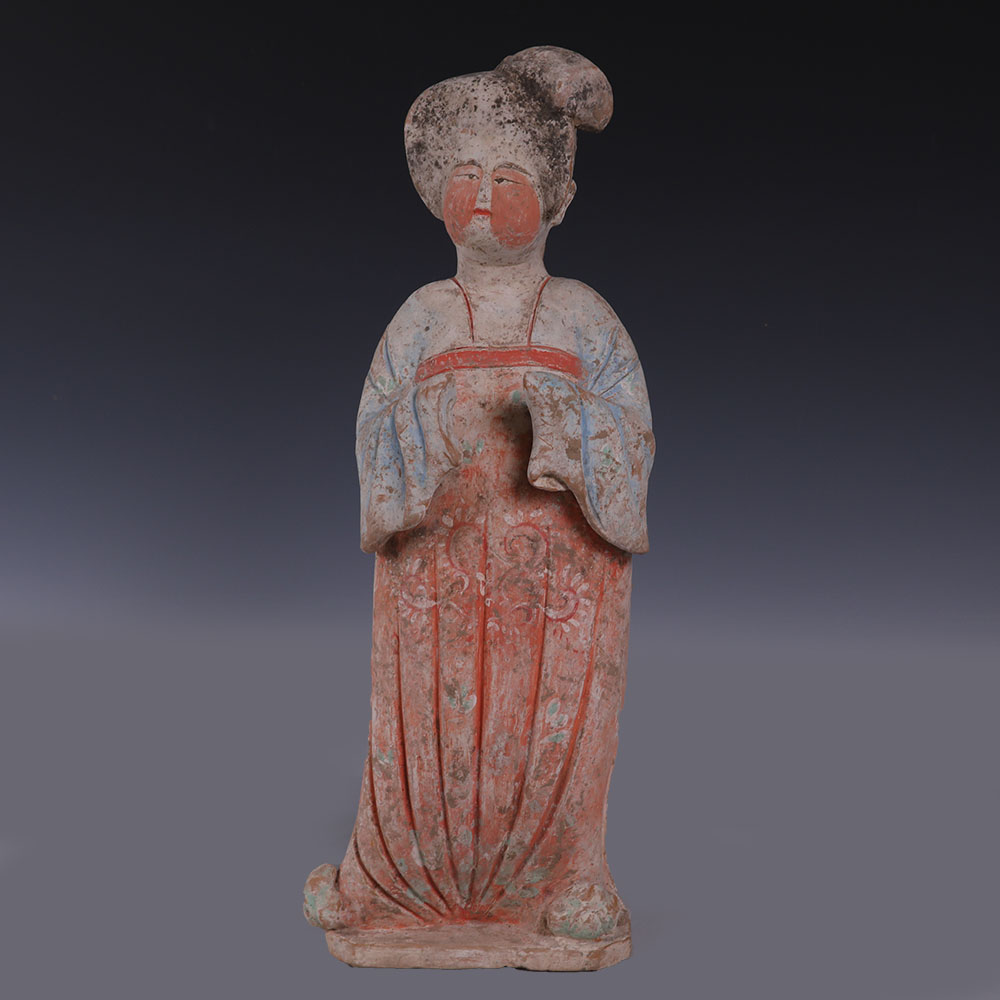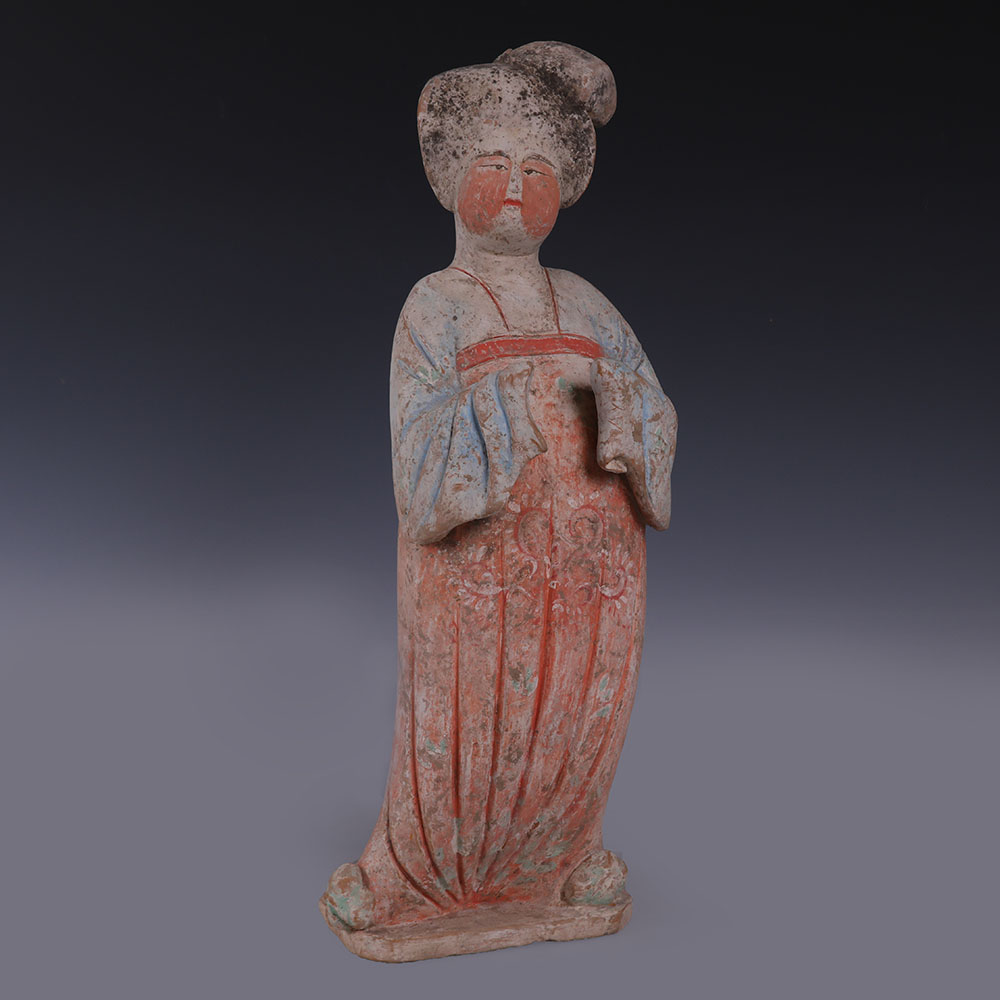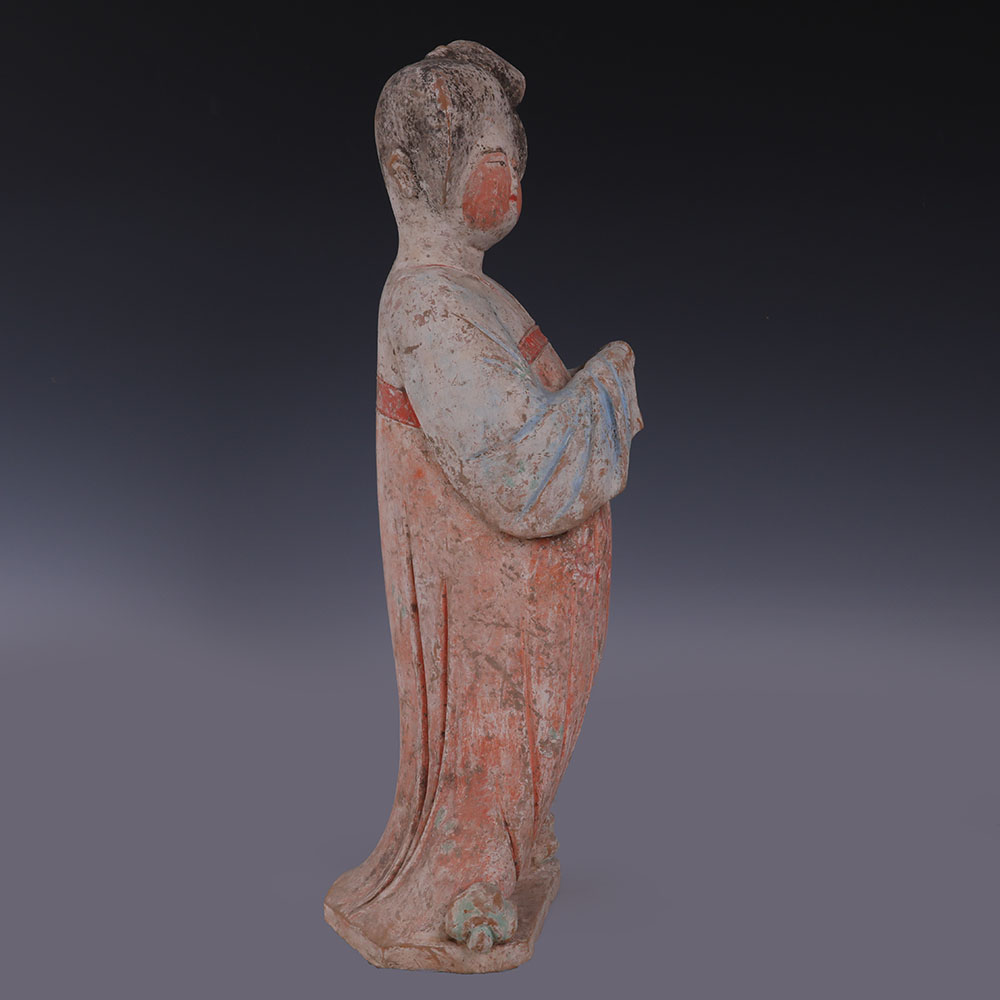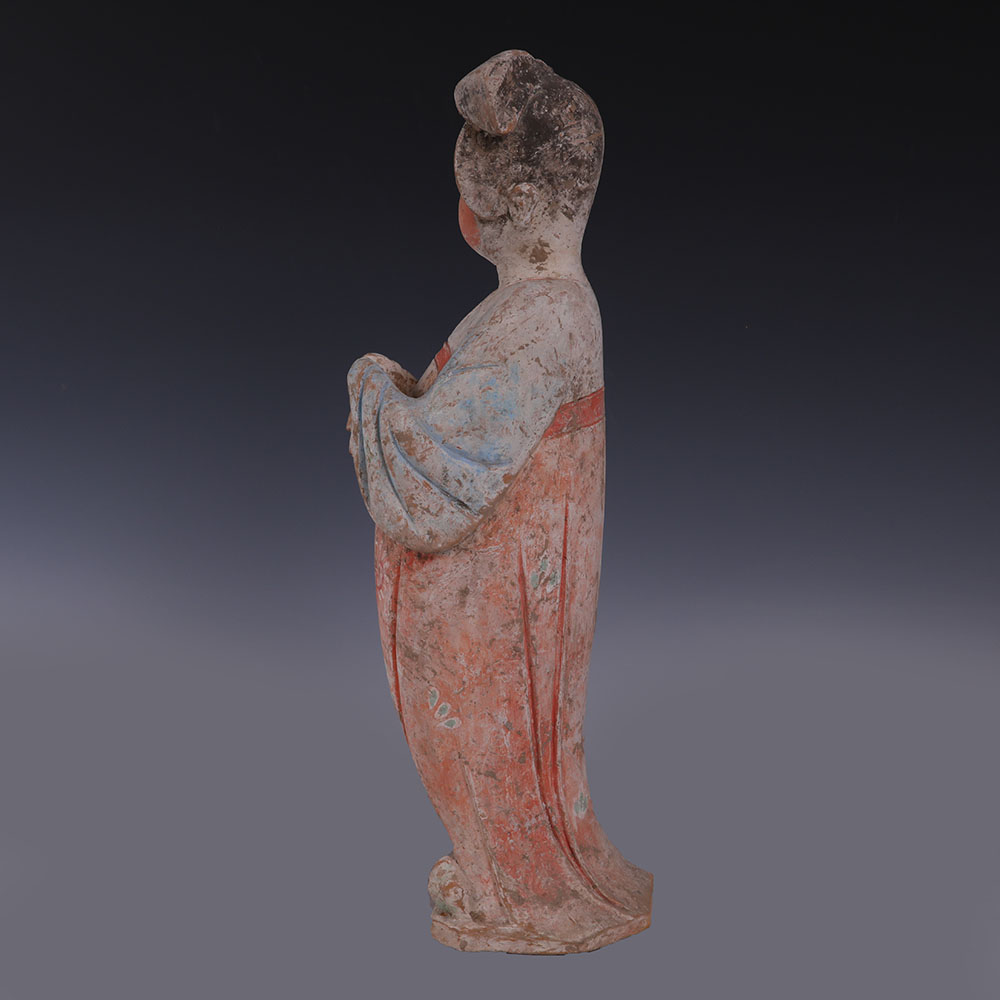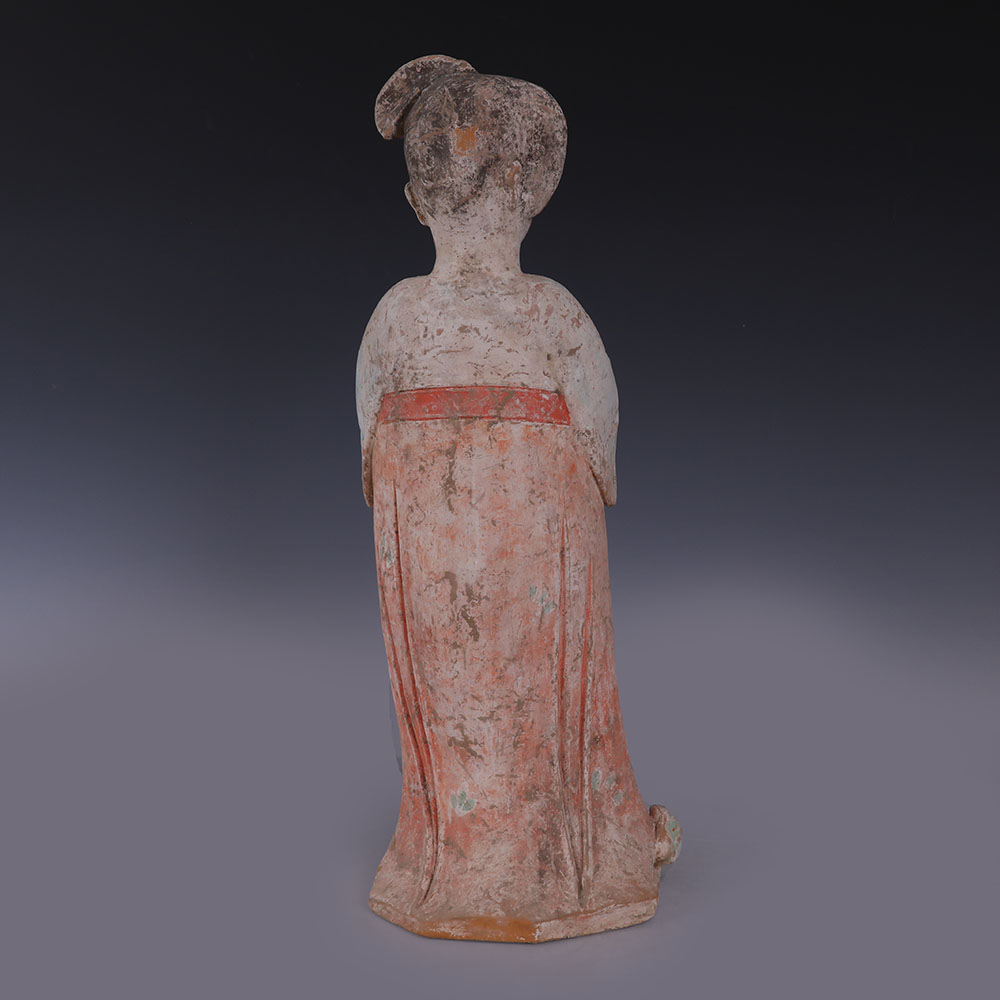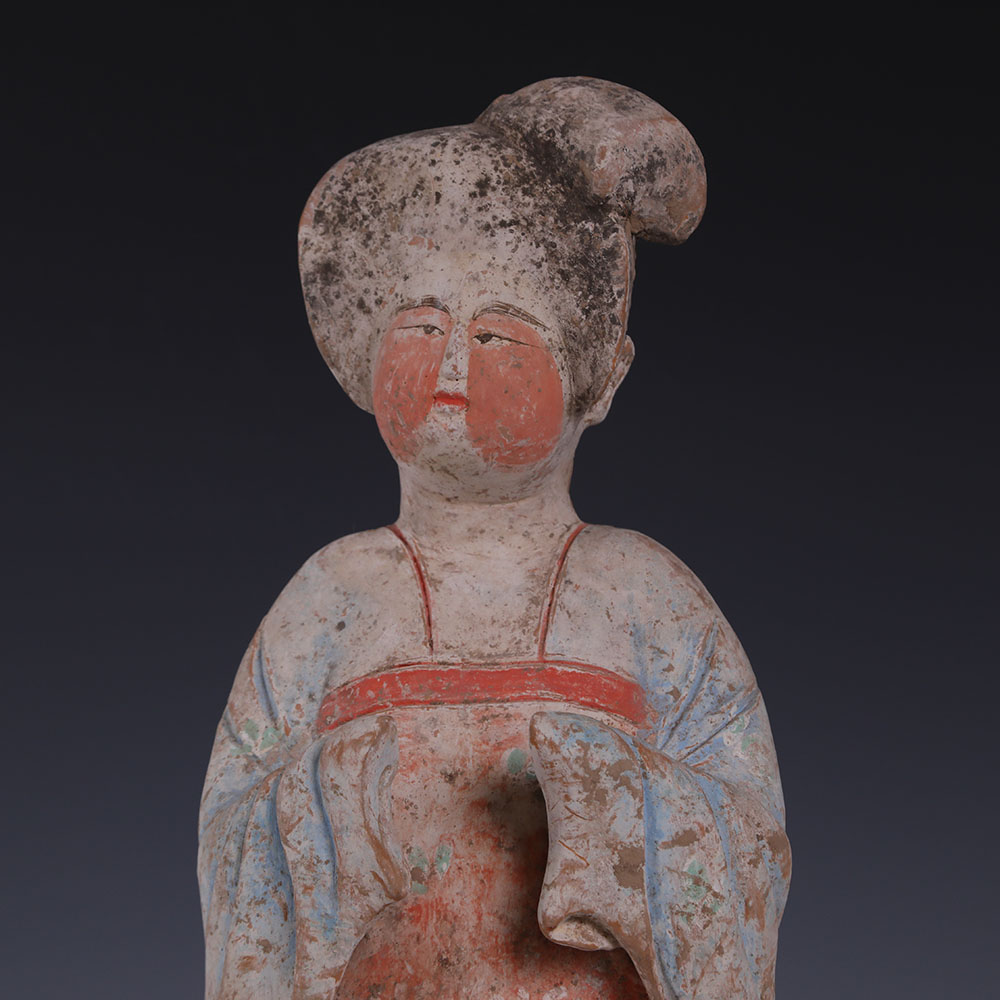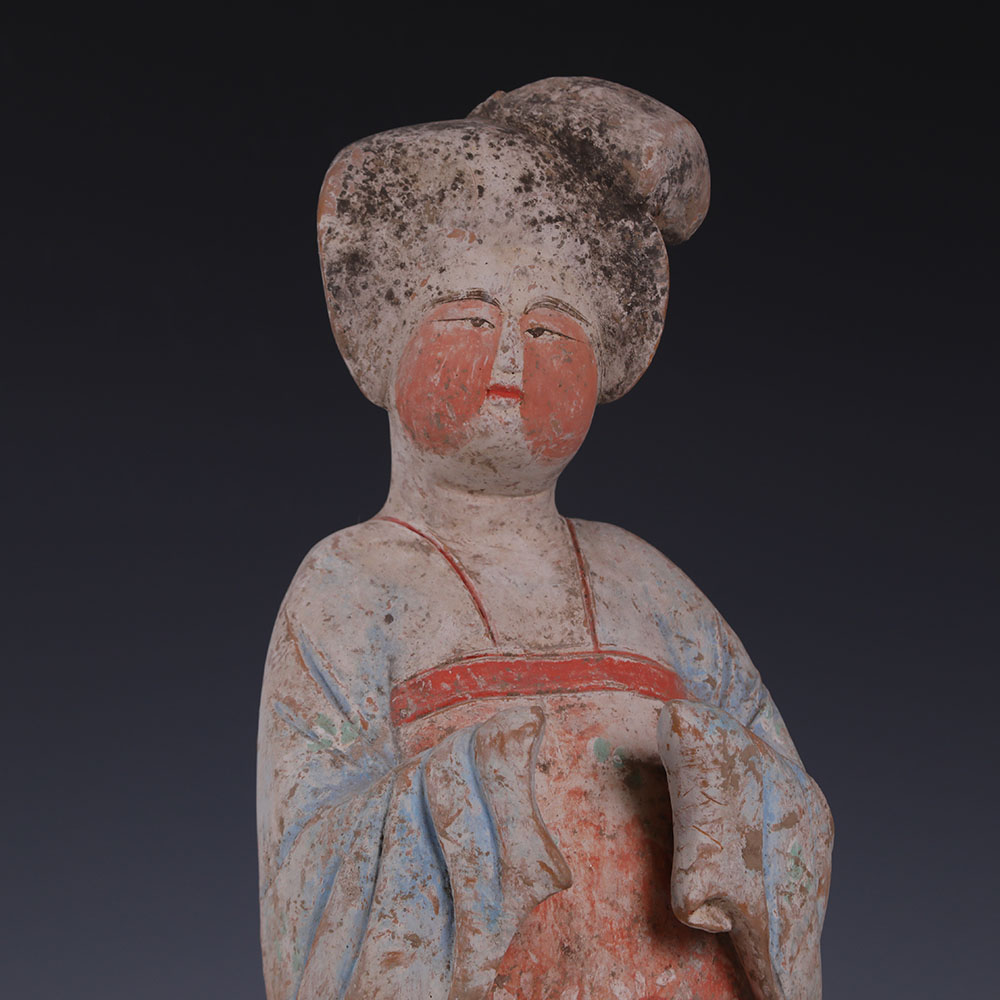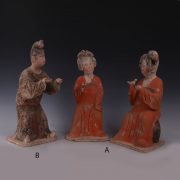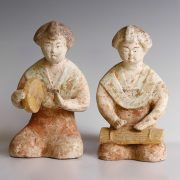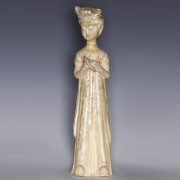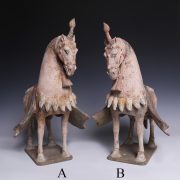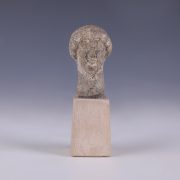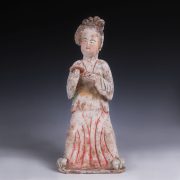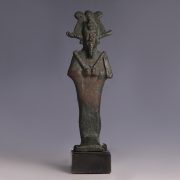The Tang Era of Chinese history is heralded as a golden age. It witnessed the prosperity of culture, economy, diplomacy and politics under a unified government.Stability within China led to an expansion of foreigners entering and living within the country, bringing with them their own cultural and social habits.With the introduction of different cultures, a new movement was ushered in. People were open to new ideas and beliefs, integrating and learning from new cultures. Normal class and social boundaries were dispelled with. Art was a particular genre that flourished with this new prosperity. Like other areas of the Chinese world, Tang art was influenced by the influx of new ideas and cultures.The emergence of the ‘Court Fat Lady’ as a popular image of Chinese identity first made its appearance under the Zhou Dynasty, which briefly interrupted the Tang Dynasty. Women were romanticised and heroised. They were liberated in all sense of the word. Previously, the taste for women, especially concubines, had steered towards slim and slight woman. The new Tang Dynasty fashion preferred the more buxom figure. Plump women of the high court were enjoying their heyday. They were represented in art and poetry and became popular in the royal household.It is said that the most famous of Court lady, Yang Guifei, the consort of Emperor Xuanzong (r. 712-756) set the fashion for ladies of ample form. Clothing and fashions accommodated Yang’s more mature figure and for the first time, long, loose fitting robes with high necklines became court fashion accompanied by elaborate hairstyles.
To discover more about Tang Dynasty ‘Fat Lady’ statuettes, please visit our relevant collection page: The Importance of the Fat Lady in Chinese Tang Art.
